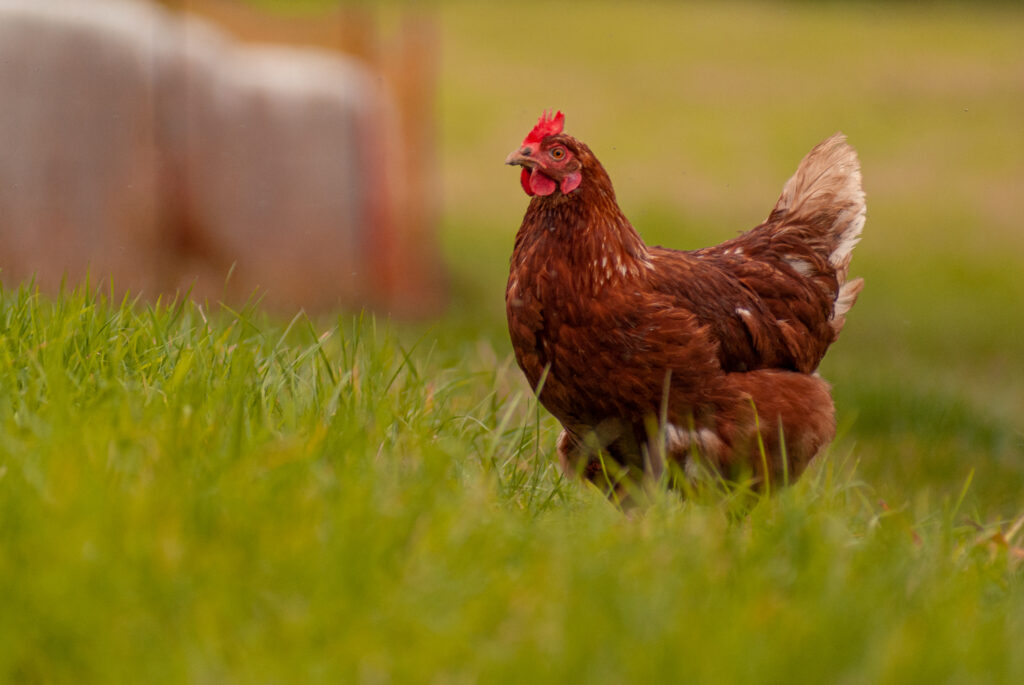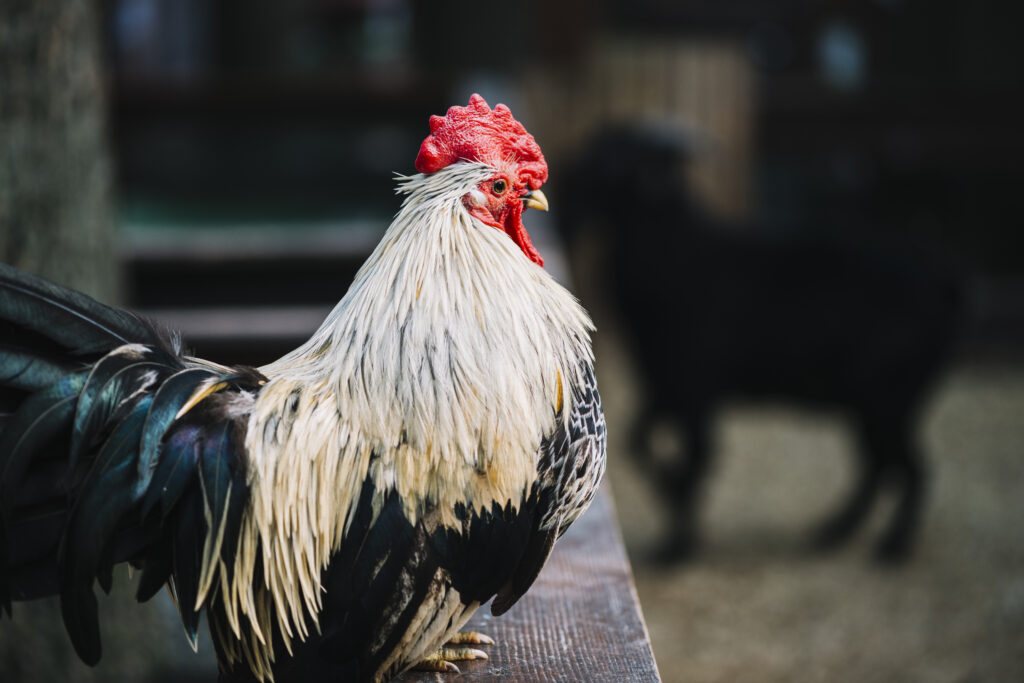- 30 November, 2022
- Posted by: Tim Hodgetts
- Category: Blog

“Most farms are only 100% compliant on the day of an inspection,” Dave jokes dismissively. As a seasoned farmer, Dave is well aware of the sea of paperwork required for inspections. Historically, his family’s farm was arable land; however, over the past few decades, Dave and his father have shifted to a more diversified production model. Now, they also raise chickens and house free-range layers. Poultry presented an opportunity, offering a year-round, predictable income—something the family didn’t have before. Today, their family farm produces four sheds of broilers for a major British producer and has a contract for free-range eggs with a large supermarket chain. However, upon entering the poultry business, Dave and his father discovered the extensive paperwork involved in complying with poultry welfare standards. Although poultry is an entirely self-regulated industry, selecting a scheme and complying with it is as vital as breathing.

After years of complying with a scheme and talking to other farmers, Dave is confident that welfare is a pretense, and schemes are just trying to make his life more difficult. Most of the farmers he knows don’t follow welfare commitments to the letter; they do just enough to pass inspections by their chosen scheme, often only a few days before an inspection. Some of the farms he knows have less feather coverage and a bigger problem with pododermatitis; on paper, though, they are identical to his own. This is another reason why Dave disregards any positive impact a scheme might have on the market. Dave isn’t the first farmer I’ve met who thinks welfare is a cost, even an unnecessary, redundant one. There are several aspects to this issue, at least from my perspective.
What is Wrong with Poultry Welfare Today?
The first aspect is information. Schemes and the government aren’t doing their best to inform farmers that animal welfare is not just an overhead cost; it is, in fact, a massive investment in the quality of the produce and the productivity of their business. Scientific studies conclusively show that higher welfare means lower mortality, better feed conversion ratio (FCR), higher feather coverage, decreased pecking, and increased natural behaviors, all contributing to a higher quality product that can fetch a higher price. Why are farmers being told, “the consumer wants high welfare chickens,” and then being buried under tons of paperwork, potentially brewing resentment between chicken consumers and producers? We should be telling the farmer, “this is a good idea for your business,” and showing them the direct link between welfare and productivity! The stigma of higher costs associated with welfare and sophisticated AgTech equipment should be dissipated by showing the farmer just how much better their profit margins and the quality of their product could be. Seemingly, not much is done in this regard. Everyone is a loser in this scenario: the farmer has lower profit margins, the schemes put their logo on a product that isn’t the best it could be, and the consumers trust a promise of quality that isn’t met.

The second aspect is paperwork. In our digital age, paperwork should be a thing of the past, yet it persists. For farmers, most of whom do not entirely believe in the effectiveness of schemes, welfare represents a cost and, above all, it’s synonymous with annoying, ever-present paperwork. The priority is submitting the right paperwork; real welfare becomes almost an afterthought. The farm is compliant on the day of the inspection. But what happens between inspections? Well, the truth is, it doesn’t really matter. If the focus is on paperwork, then that will be the main priority. Why not remove the excessive paperwork and replace it with a system that monitors actual welfare, shifting the focus back to what is important – the wellbeing of the animals? Our company offers a continuous welfare monitoring solution, and we know we aren’t the only ones in the market. Surely, if the solution is readily available, schemes should at least try to monitor the farms to see how compliant they actually are.
The third aspect is transparency. It won’t be long until consumers lose faith in schemes and quality assurance. It will only take a few high-profile investigations to shake their trust. Let’s face it, all animal produce is under immense scrutiny, and there are plenty of highly motivated people who would love nothing more than to sneak into a shed at night and expose what they find to the world. Unless quality assurance schemes provide 24/7 monitoring and indisputable evidence of consistent adherence to high welfare standards, the industry will continue to suffer from bad press and attacks.
The industry needs to make a step towards its consumer.
This leads me to the fourth aspect – authenticity. On Back British Farming Day, I noticed that pig and poultry were notably absent from the feel-good NFU video showcasing a diverse selection of farmers. There is one shot with a lady holding egg crates. But where are the broilers, where are the pig barns? I’ve heard it all before: “The consumer wants to see bucolic bliss; they don’t want to see intensive poultry units.” That may be true, but more than half of the meat consumed in the UK is chicken, produced in an intensive poultry unit. Maybe it’s time for poultry to reconnect with its consumer? To show a degree of authenticity and responsibility? If the consumer looks at intensive poultry units and makes a choice towards slower-growing breeds, BCC, free-range, organic, and others, then that will be the market of tomorrow. Farmers are constantly being told by retail how they need to meet the demands of the consumer, but farmers and consumers are discouraged from communicating with each other. In the era of YouTube, Instagram, and TikTok, it’s so easy to reach out and establish a direct dialogue. So, why aren’t we doing just that?

Transparency in Poultry Industry: a Path Forward?
But not all hope is lost. Dave’s farm had our lighting installed a few years ago, and they have so far enjoyed its performance. When we informed Dave that we released a new product line of poultry sensors, we had some pre-existing goodwill to build upon. Even though Dave was initially skeptical, he trusted us enough to let us show him the numbers. We clipped our sensors onto his ALIS system and explained how he can receive alarms of abnormal levels and activity in the shed on his phone. We met again a few weeks later, and Dave was a changed man. He saw the curve for one parameter slowly climb overnight only to normalize in the morning, and took action by adjusting the settings on his ventilation. The wayward parameter stayed still overnight. It was a small thing, but it made an immediate difference to Dave’s chickens. “I can see they’re more active when I go and check on them… I never would’ve caught this error myself.”

To Dave, “welfare” used to be a term thrown around by big companies to describe some provenance and paperwork, but now he sees what welfare should be – the health and productivity of his flock. The bigger question is, why aren’t schemes using in-shed monitoring to quantify welfare? It only took Dave a few weeks to see the benefit of poultry sensors; he is more confident in his flock, and he knows exactly what happens with it at every moment in time. He takes pride in his work, he cares for his flock; today, he is a step closer to being transparent with the consumer. He knows he has nothing to hide, and he can prove it with data. Can a scheme do the same?